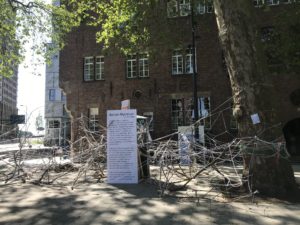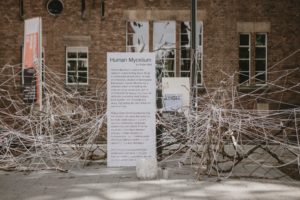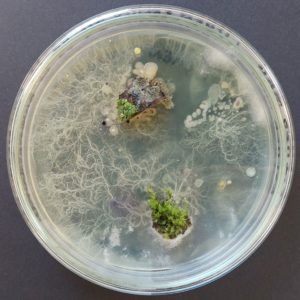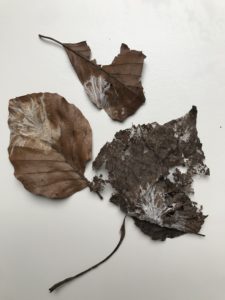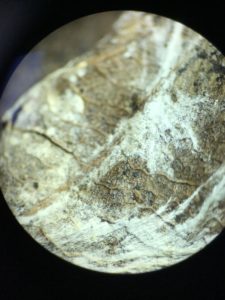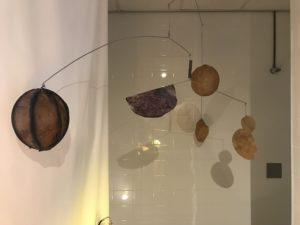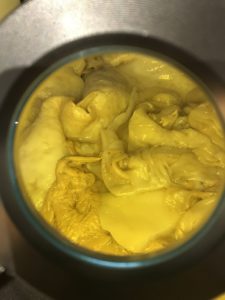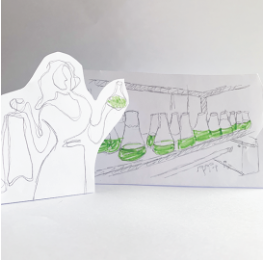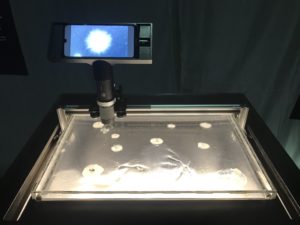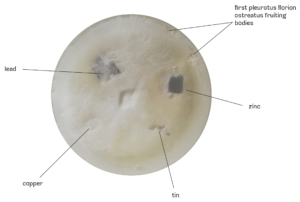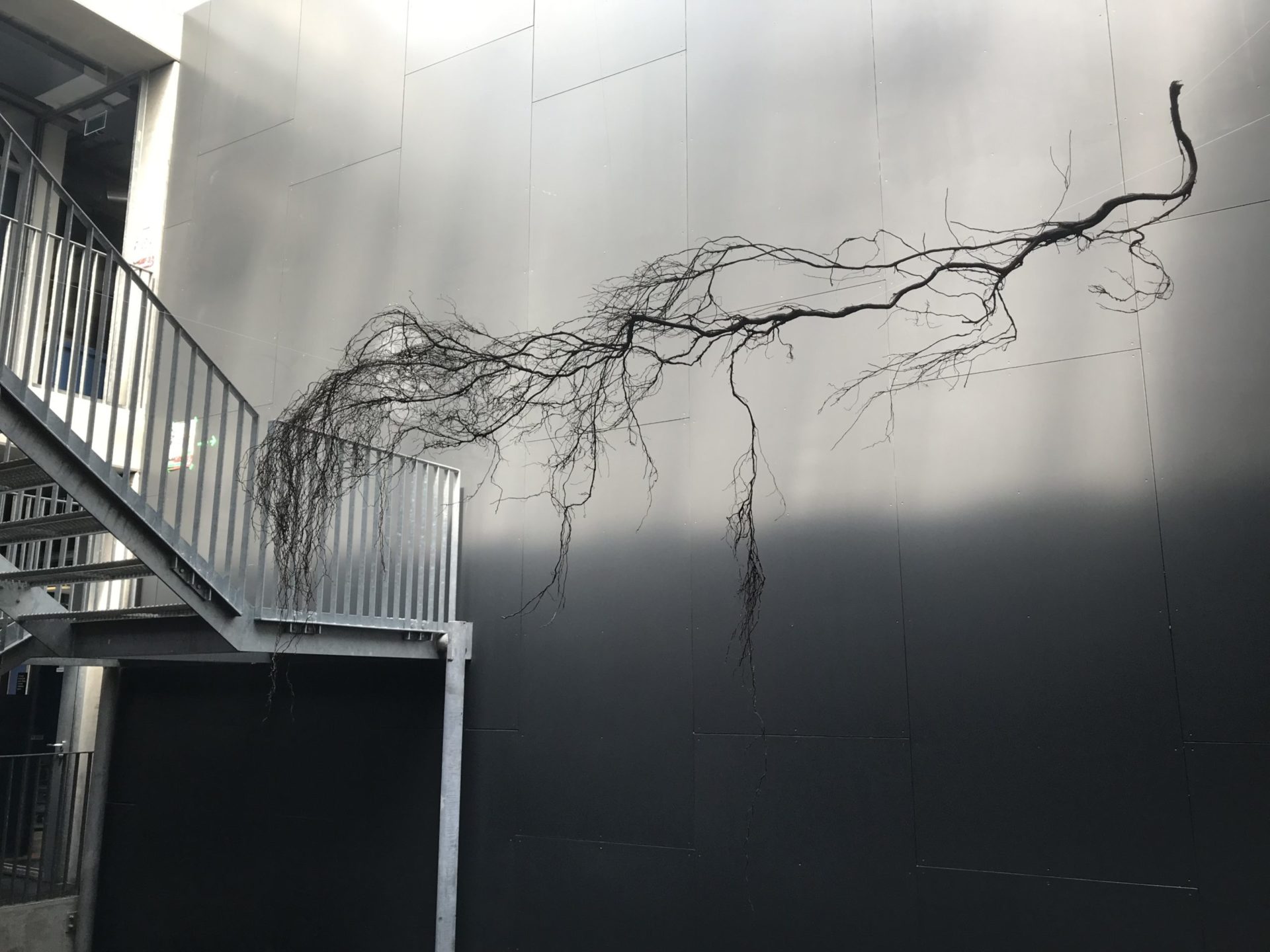- Archive
- Living Station Inspiration
Projects with the Living Station Lab
Our new facilities the Living Station Lab at WdKA is running since October 2022 and hosted already some nice projects.
If you wonder what can be done in our new station here are few examples:
Putting down roots
Esther came to work in the Living Lab to be able to grow mycelium and visualize the network it created when growing. The connection between humans and the fungi world is a topic we would like to explore further in the Living Station Lab.
“The Living Station Lab has been a great support in realizing this project. Growing mycelium cultures and looking at them through the microscope helped me enter the hidden world of fungi and gave me a bigger understanding and appreciation of the wonderful realm of mycelium.” – Esther Maij, Fine Art Graduate WDKA 2023
Human Mycelium is part of the research project Putting Down Roots, a multidirectional exploration of roots and rhizomes, situated on Buitenplaats Brienenoord. Human Mycelium is a collective action of recreating tree roots and fungi overground. Join in and become the ‘human mycelium’ by artificially connecting these separated trees together with branches and string, highlighting their interconnected nature. The work was exhibited during the Graduation Show 2023 in front of the Willem de Kooning Bleak entrance.
Putting Down Roots investigates how the ‘invisible’ life below the forest can be made visible and how humans can form sustainable sympoietic relationships with nature. From the rhizomatic (non-linear) research emerged multiple artworks as fruiting bodies.
Scobyosa
Anne was very explorative with bacteria cellulose. She could grow large pieces in our storage room and we exchanged about her experiments, especially making the SCOBY conductive. This was a new approach that we hope will be explored further.
The project Scobyosa delves into the realm of bacterial cellulose and its wonderful qualities and potential. Derived from the natural fermentation process of yeasts and bacteria in sweetened tea, the bacteria convert sugars into an organic material: bacterial cellulose. Its appearance possesses an intriguing, otherworldly appearance that simultaneously captivates and challenges.
In the Kombucha industry, bacterial cellulose is a by-product, losing its value. The material holds properties that respond to different senses, allowing the material to be experienced in different ways and making its value transparent. The installation demonstrates the collaborative abilities of the symbiotic culture of bacteria and yeast (SCOBY) and the transformative potential of bacterial cellulose. Serving as an invitation to challenge conventional perspectives on organic materials, highlighting the importance of reevaluating our relationship with materials and our understanding of waste in the context of sustainability and interconnectedness.
“SCOBY is only so much: it is alive, it is growing, it is dying, it colours, it is culture, it has a strong aroma, it is a drink, it is a snack, it is slimy, it is strong, it is alien, it is familiar, it repels, it intrigues, is it leather? Is it skin? is it natural, is it synthetic? It is vibrant.” – Anne
Gwen has worked with us on her project about data storage in Living Systems. She discussed her project with us and we helped her via our scientific knowledge to create a visualization of the process using cyanobacteria (photosynthetic microorganisms).
-
Conor Croasdell
Fungal timepiece
Conor has a long experience with the fungi world and let us dive in thanks to his installation created in collaboration with the Living Station Lab. Previously he had to use the facilities of Blue City but since October 2022, he can study at WdKA and drop by the lab to work on his project. Thanks to our Biocabinet he could create a large sterile agar box where several species of mycelium grow and interact with each others.
A growing monument for the lost natures: remediation through mycelium’s metamorphosis
For her project, Artemis wanted to give attention to a polluted area. She came up with a list of toxic chemicals and many questions about it. Since in the lab, we have the microorganism Pleurotus that has the ability to decompose nearly everything, she made experiments to show the power of this fungus to depollute. Mycoremediation is a topic that should be communicated and developed. We are glad to have had the possibility to work with a student of Spacial Design and collaborate via Artemis to this Major.
Julius is fascinated by crystals and has worked on this topic with the Living Station Lab using our expertise and microscopes. He explored all possibilities to improve the imaging of our best microscope and the result turned out stunning.
